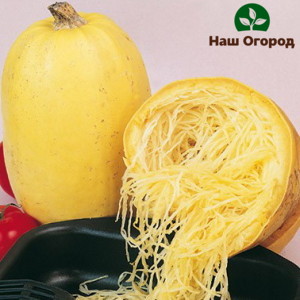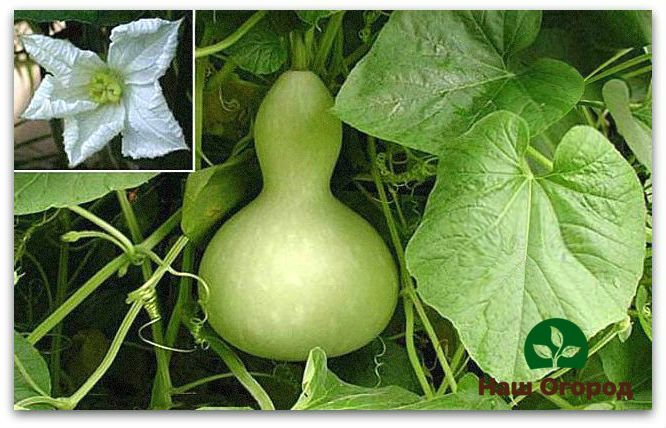How to grow a rich crop of zucchini
Content:
Zucchini - this comes from the genus of pumpkin, but grows without lashes, has oblong fruits, various shades, it can be green, and yellow, and white or black. Probably when you hear about zucchini, you think of the yellow-green zucchini that you can buy in the supermarket all year round. But in fact, there are many other varieties of it, and they are all delicious and healthy. They can be easily grown during the summer. The more you pay attention to them, the more they can grow.
Zucchini: varieties and characteristics
Zucchini is like a marshmallow. This type of zucchini has a rather sweet taste, it is yellow and half green, and also has a pleasant aftertaste. This is a highly productive and early maturing variety. Ripens after forty days after planting. Add it to your favorite dishes instead of pumpkin and you will be pleasantly surprised.
Zucchini. Also a variety of the well-known zucchini, comes from the pumpkin family, is a relative of cucumbers and squash. It grows bushy, the fruit is usually in the form of a cylinder, has a green skin. This is an annual plant, quite unpretentious, but still more demanding than ordinary zucchini. However, it has a very delicate flavor that makes it easy to consume raw. Because of its low calorie content, it is a component of many types of diets. Zucchini is a pretty hot, new trend in the world of cooking, even making pasta and spaghetti low in starch and carbohydrates from it.

"Spaghetti Raviolo"
Spaghetti Raviolo. This is a special variety, different from what we are used to. Its shape model is round, yellow. The bushes of this species have a lot of foliage and ovaries. Fruits can weigh about one kilogram. At an early stage, this is a vegetable, absolutely nothing will differ from simple zucchini, they have the same aromatic and soft structure. But it is worth a little wait and his skin will become coarser and harder. When cut, you will see its original-looking pulp, which will consist of long fibers. They are well stored, which allows you to do this all year round.
Lagenaria Calebas. This is a hybrid from a bush which can be harvested up to forty kilograms. But for such a result, you will have to work hard, namely, to provide good care, timely watering and suitable fertilizers. The fruit has a thin skin, green color and pear shape. The taste is indistinguishable from ordinary zucchini, well suited for canning. It is important that they do not overripe, otherwise they will no longer be suitable for food.

Lagenaria Calebasa is a rather capricious variety of zucchini that needs careful care
Lagenaria ordinary. This is probably the strangest variety of zucchini. The bushes of this culture grow quite large, with elongated lashes, which will need to be tied up. The pulp is quite tasty and soft. The shape of the vegetable is elongated, in length it can reach one hundred and seventy centimeters, and in weight as much as twelve kilograms. All this helps to get a harvest of unprecedented size. It is recommended to eat only, young fruits, maturity can be easily checked with a marigold, and if the skin is easily peeled off, then the zucchini is suitable. However, this type of variety has a rare feature, the fruit can be cut directly from the garden, the cut site will be covered with a crust and the vegetable will continue to grow further.
Planting zucchini
All zucchini is not difficult to grow on your own. Sometimes the bushes of these plants are not very dense, but in any case they need a lot of space.They are highly productive, so you don't need to plant a lot of seeds. The more you plant, the more harvest you will have.
The most rational way to grow is to plant about five seeds in a row. Cut off any excess wyrm and underdeveloped fruit that you don't need to allow the rest of the vegetables to grow to full size.
If you have a small area, then try zucchini varieties that grow in the form of a bush, for this simply look for dwarf varieties.
Zucchini care
In hot weather you need to water every other day, and in cool weather once or twice a week. The water for irrigation should be warm, about twenty-five to thirty degrees, only at the very root of the plant. At the very beginning, before flowering, watering should be at least five liters per bush.
Try not to get water on the leaves of the plant, so you will avoid mold and other fungi that can harm the crop.
When growing zucchini, be careful with their skin - it is very fragile! If you want them to be stored for a while, then make sure that your zucchini has no damage to the skin, as this will speed up the decay process.
Zucchini: how to harvest
You will know the zucchini are ready to pick if the skin is easy to pierce with your fingernail. They can be plucked for cooking as soon as one reaches about fifteen centimeters in length. When picking fruits, you need to cut them off, not just pull them. If the vegetable is pulled, then the whip can be damaged and the plant will die.
Pest problems
Zucchini can be very susceptible to many pests. Watch out for this issue. If you suddenly find that your squash has enemies in the soil, then plant them elsewhere next year.
Culinary outcome of events
All courgettes are extremely versatile in cooking. They can serve as an excellent basis for dishes, so you can make all kinds of spice combinations. You can use zucchini in Italian, Russian, Mexican, Asian and Middle Eastern cuisine. Harvesting and cooking courgettes when they are still young is actually the best way, as they have more flavor and aroma during this period.

